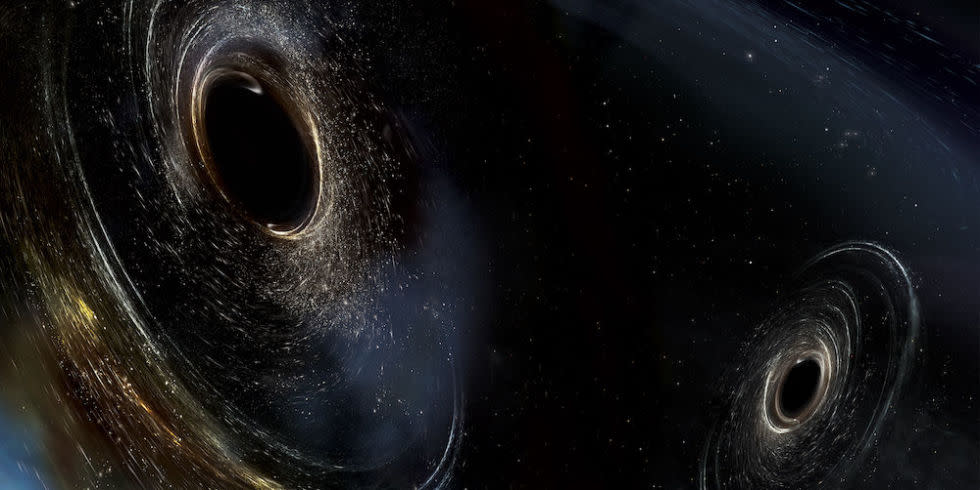These Two Black Holes Orbiting Each Other Are Surprisingly Close to Earth

In early 2016, a group of scientists from the LIGO observatory made an incredible announcement: They had detected gravitational waves-ripples in the fabric of spacetime-from the collision of two supermassive black holes in another galaxy. This discovery was momentous not only because long-sought gravitational waves finally had been discovered, but also because nobody had ever seen two supermassive black holes orbiting close together before.
Since that announcement, a few groups of astronomers have discovered more supermassive black hole pairs. And now scientists from Pune University in India and Rochester Institute of Technology have spotted the closest pair yet. The newly discovered black holes are a mere 400 million light-years away, in a galaxy called NGC 7674.
So 400 million light-years may sound like a lot-it's several thousand times the diameter of our own Milky Way galaxy and dozens of times the distance to Andromeda, the nearest major galaxy to our own. But considering how rare supermassive black hole pairs are, 400 million light-years is surprisingly close.
What's more, these black holes are orbiting remarkably close together, separated by just a single light-year. Again, this might sound like a lot, but each of these black holes is gigantic-about a million times more massive than our sun-and such an orbit is incredibly small. In fact, this is the smallest orbit of two supermassive black holes ever discovered, not counting the colliding black holes spotted at LIGO.
Currently, it takes about 100,000 years for the black holes to orbit each other, but the pair is constantly creating gravitational waves which bleed off some of their energy. Over millions of years, the two black holes will slowly spiral closer together until some day in the very distant future the two will collide, creating a strong gravitational signal.
Hopefully someone will still be around to receive it.
Source: National Centre for Radio Astrophysics
You Might Also Like

